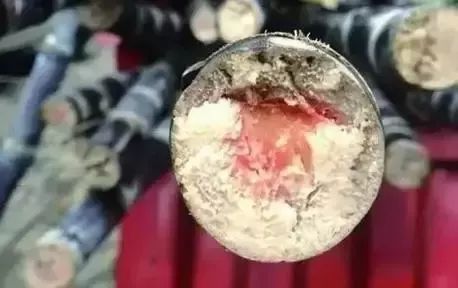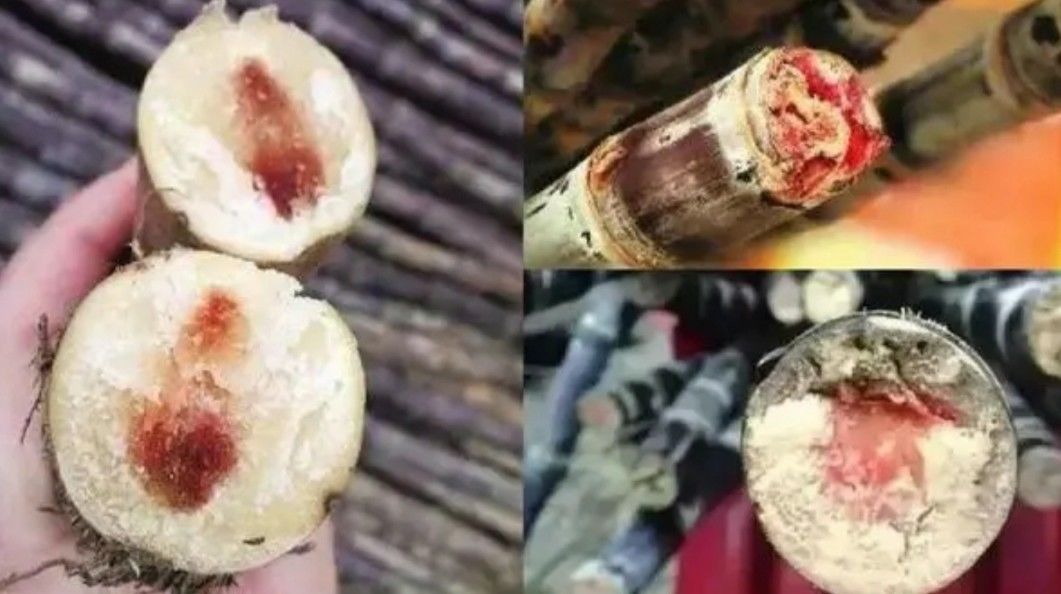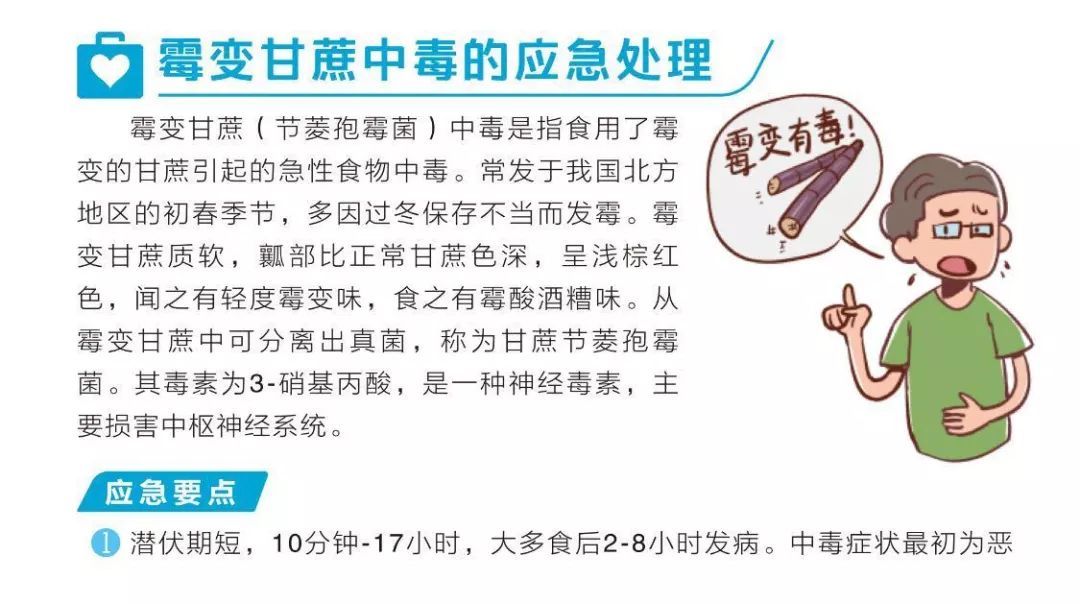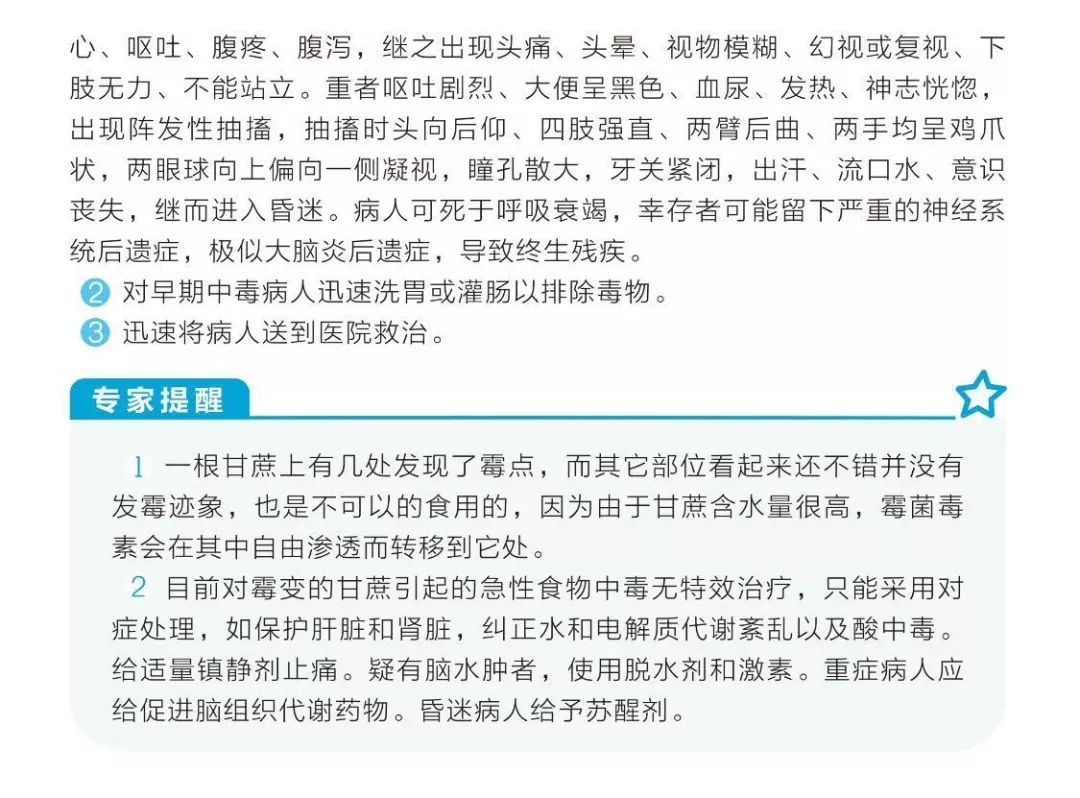Sugar cane is a sweet and juicy fruit
Always popular
But before and after Qingming Festival
Be careful when eating sugarcane
Have you ever heard a saying?
“Qingming sugarcane is more poisonous than snakes”

Image source: Miknow
Huh? Can eating sugar cane cause poisoning? !
Why exactly?
The truth is—
It’s not the sugarcane itself that has poisoned snakes
It’s moldy and discolored
“Red Heart” or “Black Heart” Cane!

The spring temperature is warmer
The air is humid
This is the time when plant pathogens begin to become active
Sugarcane pathogens
Also invades cane stems through machete wounds or wormholes
In severe cases, the internal organization of sugarcane
Turns red or reddish brown
Mildewed sugarcane will produce a lot of toxins

Is sugar cane poisoning deadly?
Only Qingming sugar cane is more poisonous than snakes?
Can I still eat the moldy part after cutting it off?
Learn about these questions together
↓↓↓
Is mold-eating sugar cane poisoning deadly?
Sugarcane will produce a neurotoxin after mildew, which is a toxic metabolite 3-nitropropionic acid produced by a few species of Penicillium and Aspergillus. 3-Nitropropionic acid is indeed a powerful toxin. It has toxic effects on a variety of animals. After entering the human body, it is absorbed, and the onset is acute, usually ten minutes to ten hours.
Causes damage to the central nervous system in a short period of time, resulting in cerebral edema, headache, convulsions in severe cases, chicken-claw-like limbs, and dilated pupils; in severe cases, it can lead to ischemia, respiratory failure and death. There are also some patients who are poisoned by sugarcane toxins and have sequelae such as language and movement disorders.
Only before and after the Qingming Festival sugar cane is more poisonous than snakes?
If there is a relationship between Qingming Festival and sugarcane poisoning, it is related to the warming of the weather. In spring, the temperature keeps rising, and fungi such as mold are suitable for growth and reproduction, which is also the reason why most foods are not easy to store at room temperature. The sugarcane in this season is prone to mildew, and the moldy sugarcane has the risk of producing toxins, so the annual sugarcane poisoning incidents mostly occur from February to April.
It is worth noting that as long as the sugarcane is moldy, whether it is around the Qingming Festival or other seasons, it will still lead to poisoning.
Which sugar cane cannot be eaten? Can the leftover sugar cane be eaten by cutting off the moldy part?
It is not recommended to eat sugarcane with soft, discolored, wine-flavored, hairy, red hearts.
If you find that the sugarcane becomes soft, the color of the core is darker than normal sugarcane, brown or red, and it smells musty or distiller’s grains, this is moldy red-hearted sugarcane, don’t buy it, it will also be damaged when you buy it. To be discarded promptly.
Many people think that if the moldy part of the sugarcane is cut off, it will be fine to eat the rest of the sugarcane. In fact, this is a fatal mistake. After the bacteria invade the sugarcane, the hyphae can extend, and even if the moldy part is cut off, the remaining sugarcane has a large amount of toxins invisible to the naked eye.
Can sugar cane juice still drink? If the sugarcane is moldy, it may produce toxins. The sellers may not know the harm of sugarcane moldy toxins, so they are reluctant to throw it away and squeeze the juice directly. Such sugarcane juice may contain higher amounts of toxins, and the risk of poisoning is even greater. Therefore, It is best not to drink the squeezed “finished sugarcane juice”. Of course, if the sugarcane is fresh and not moldy, it is no problem to buy freshly squeezed sugarcane juice. If you want to drink sugarcane juice, it is best to buy and squeeze it yourself.
How to choose sugar cane?
01 Look at the exterior and center part
Sugar cane with black and reddish skin, smooth and hoarfrost, is relatively fresh. If the sugarcane is of poor color, flocculent or hairy white matter appears at the end, and if there are reddish-yellow, tan, or blue-black spots on the cut section, it means that it has been mildewed. Do not buy such sugarcane!
02 Touch hardness
Fresh sugar cane is hard, moldy sugar cane is softer. If the texture of sugar cane is relatively soft, then pay attention.
03 Identify the presence or absence of odor
The juice extracted from normal sugarcane is sweet, crisp, tender and refreshing, and has the unique fragrance of sugarcane. If you smell sour, musty or distiller’s lees and other peculiar smells, it means that it has deteriorated, and such sugarcane cannot be eaten.
What should I do if I eat moldy sugarcane?


In addition to sugar cane
This kind of thing also needs everyone’s special attention
That’s wild mushrooms!
Spring and summer are in the mushroom world
The peak season for the growth and reproduction of members of the mushroom group
It is also a human ingested wild poisonous mushrooms
The season of high incidence of food poisoning
Remember these reminders! Remember!
Resolutely do not eat wild mushrooms
Some wild poisonous mushrooms are similar in appearance to edible mushrooms. Identification requires professional knowledge and the help of certain equipment. It is difficult to distinguish only by the naked eye and according to appearance characteristics such as shape, smell, color, etc., and it is very easy to accidentally eat and cause poisoning. .
In the wild, non-toxic mushrooms are often mixed with poisonous mushrooms, and non-toxic mushrooms are easily contaminated by poisonous mushroom mycelium. Even some non-toxic mushroom species that are epiphyte on poisonous plants can become poisonous. So even if you eat non-toxic mushrooms, there is still a risk of poisoning.
The toxins contained in poisonous mushrooms are more complex and may vary from region to region, season, variety and growing conditions vary. The incubation period of poisonous mushroom poisoning is 2 hours to 24 hours, and some are only about 10 minutes. Accidental consumption of poisonous mushrooms is the most dangerous type of liver-damaging poisoning, which manifests as nausea, vomiting, and pain in the liver area. Some patients may be accompanied by mental symptoms. At present, there is no specific treatment for poisonous mushroom poisoning, and the poisoning symptoms are severe, the onset is acute, and the mortality rate is high.
Remember these three nos!
1. Not picking. During the spring outing, the general public should not pick wild mushrooms or mushrooms and wild plants of unknown origin out of curiosity or to satisfy their appetites. For wild mushrooms in the grass on the roadside, because it is not easy to identify poisonous mushrooms, the general public should not pick mushrooms they do not know easily.
2. Do not buy. Don’t buy mushrooms from roadside vendors. Even if you buy wild mushrooms in the regular market, you can’t relax your vigilance, especially wild mushrooms that you haven’t eaten or don’t know.
3. Do not eat. To avoid food poisoning, families should be careful about eating wild mushrooms. Group meals, catering services, folk tourism, etc., do not process and eat wild mushrooms to ensure the safety of food consumption.

Spring is warm and humid,
Suitable for a variety of germs to breed,
Everyone must pay attention to food hygiene,
Beware of getting sick from your mouth!
(High Quality Living Home)